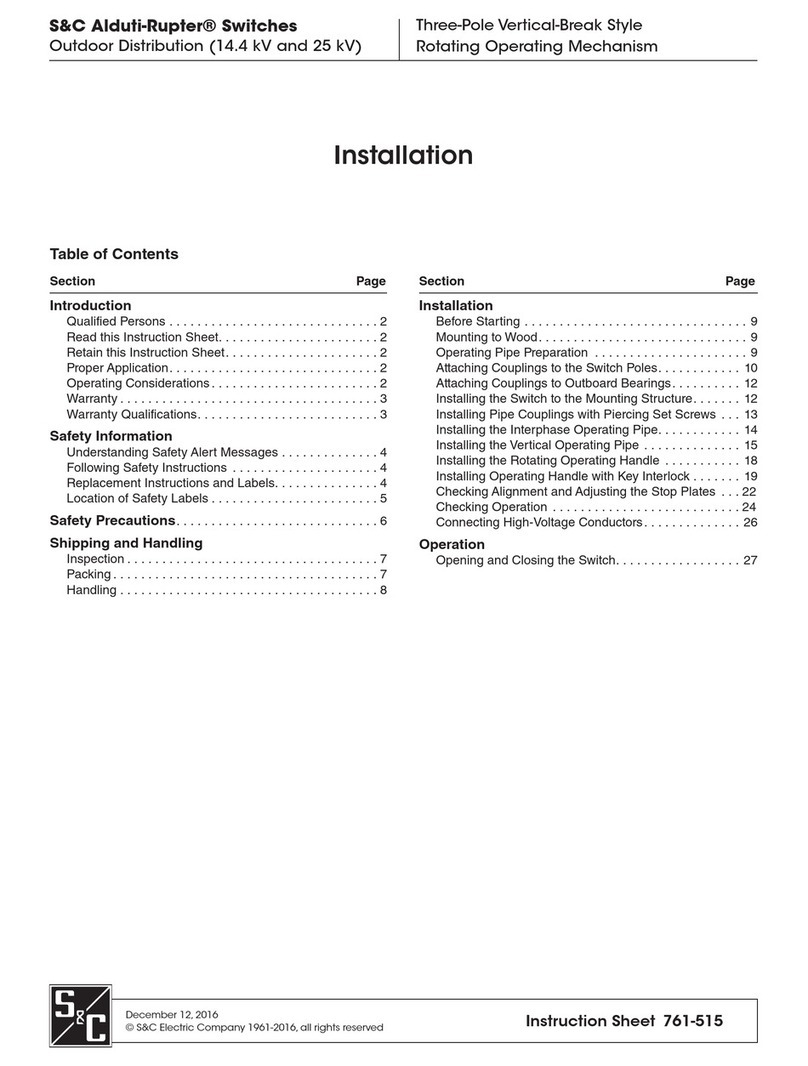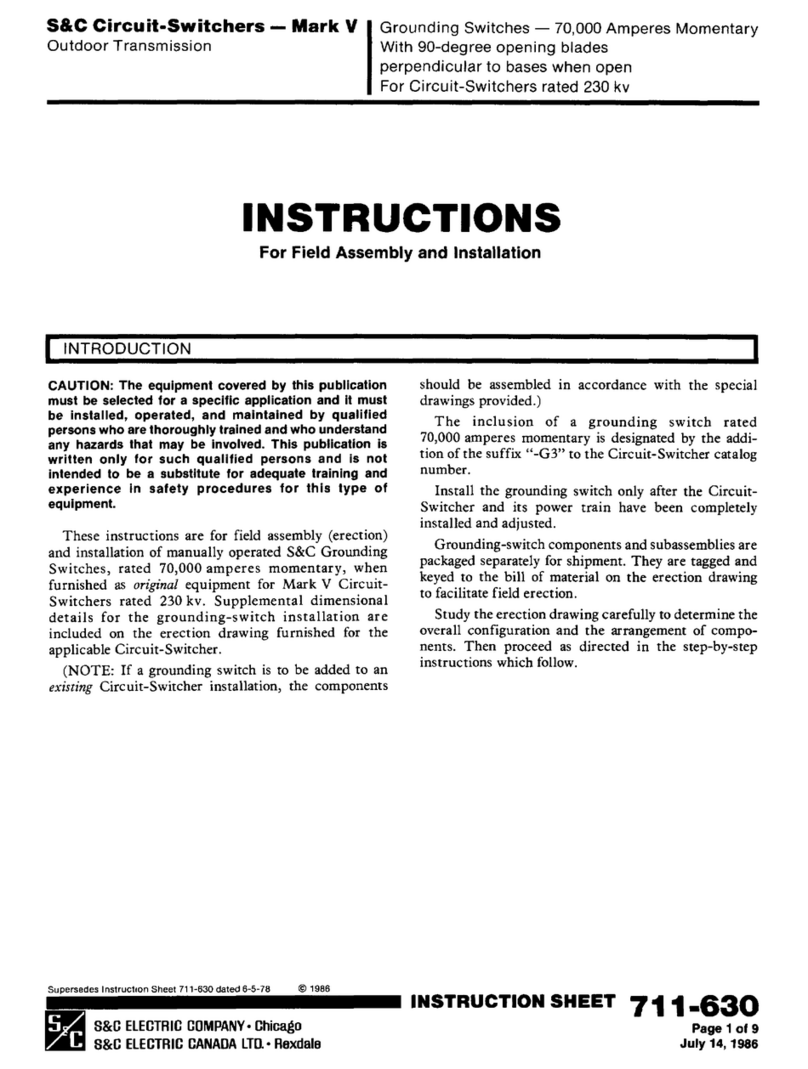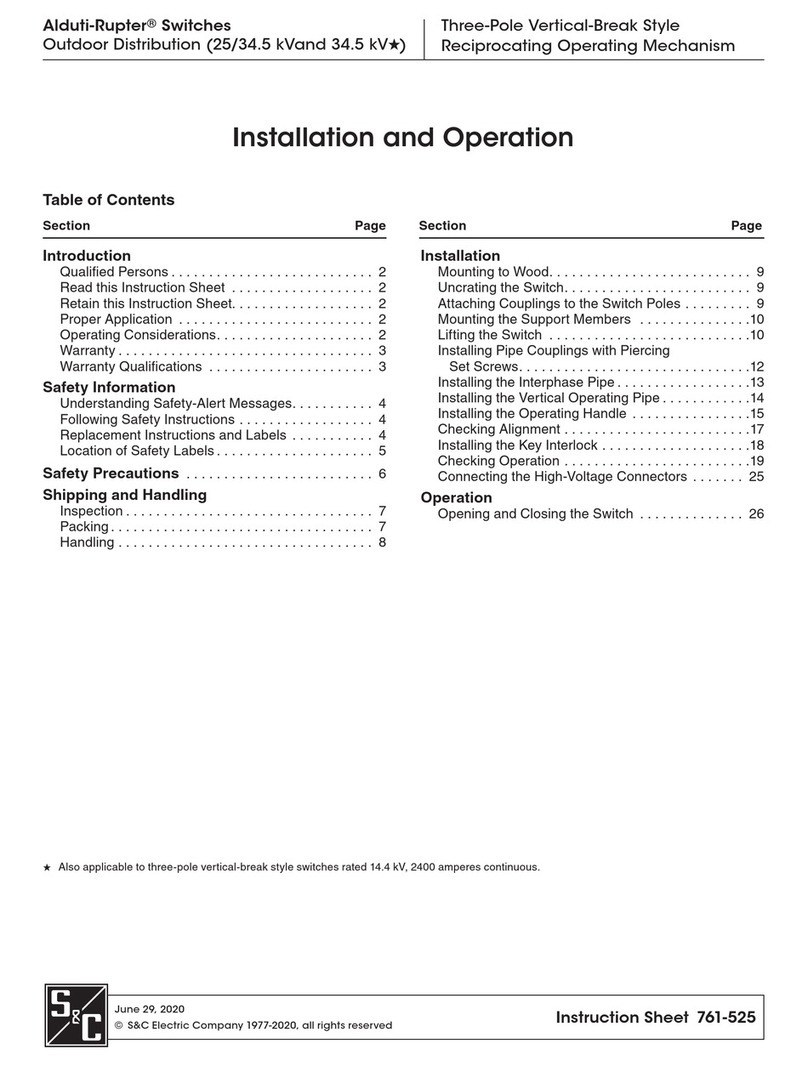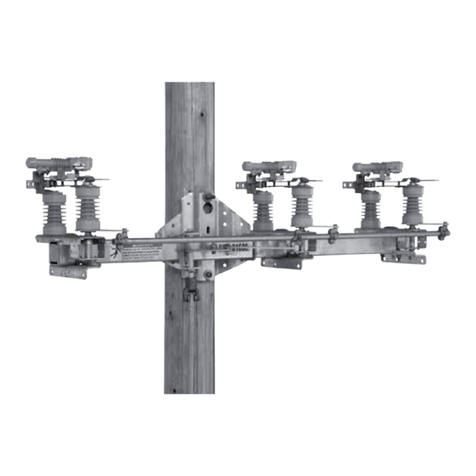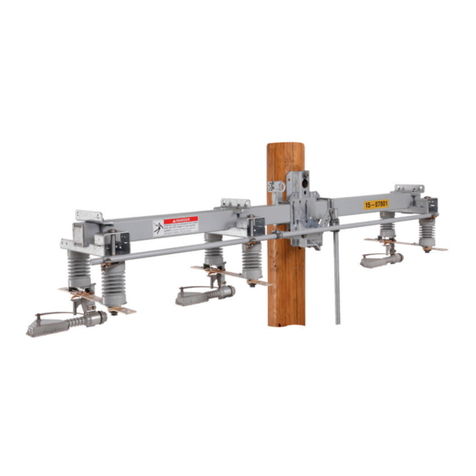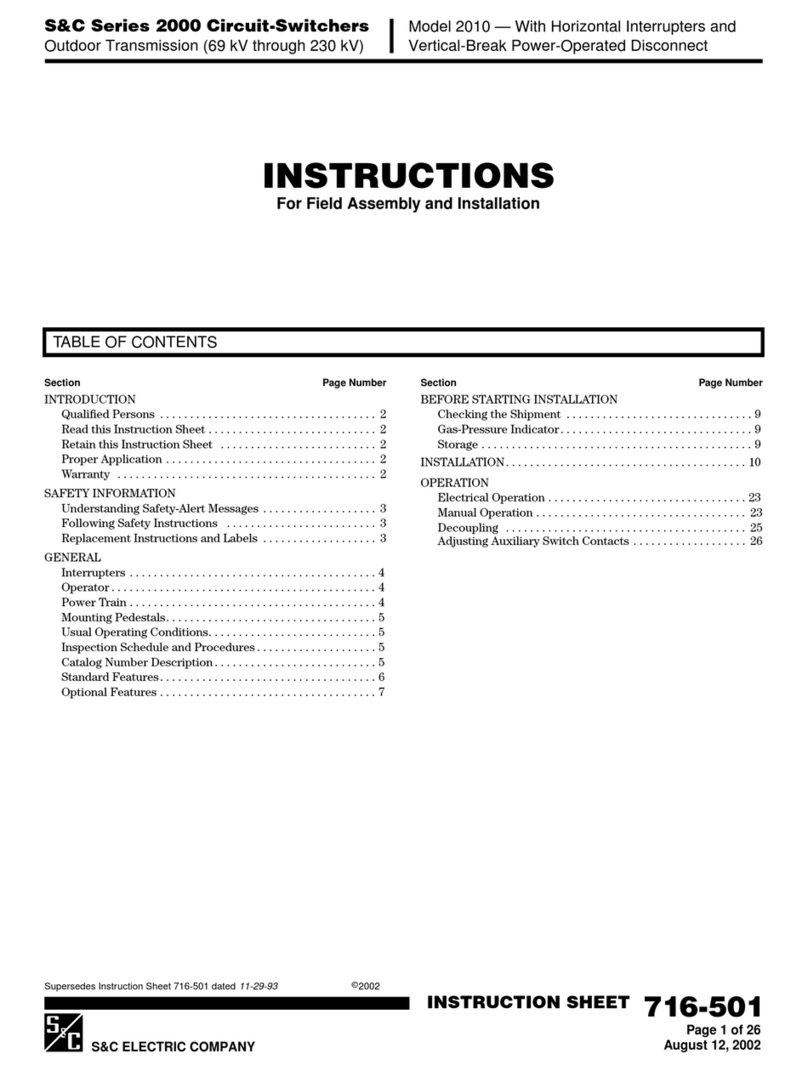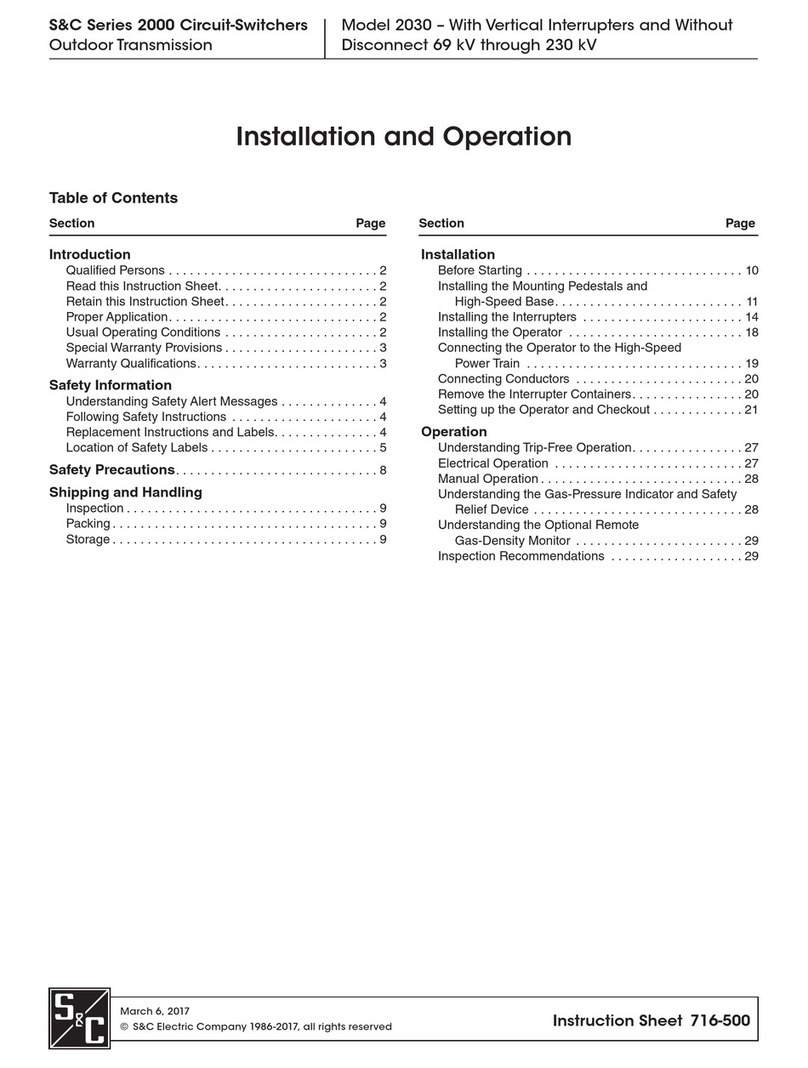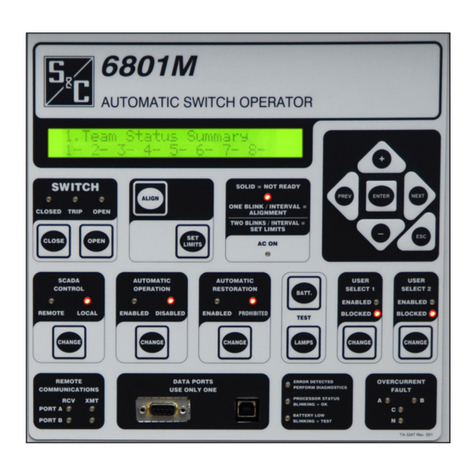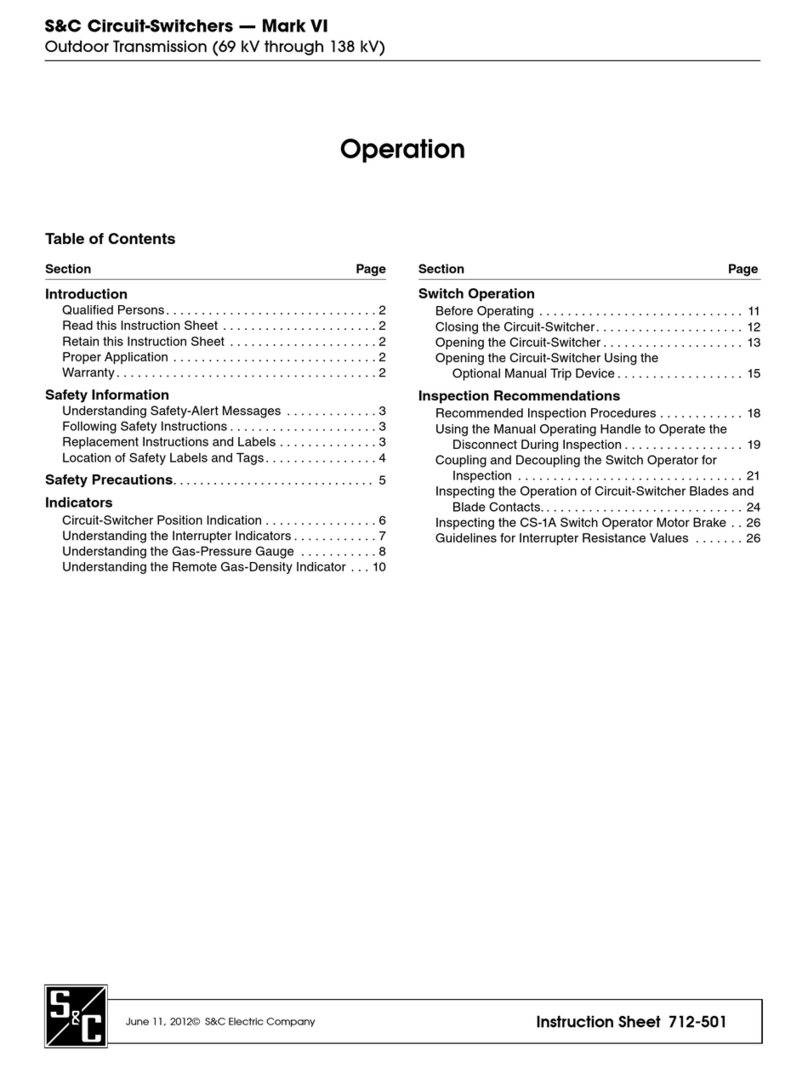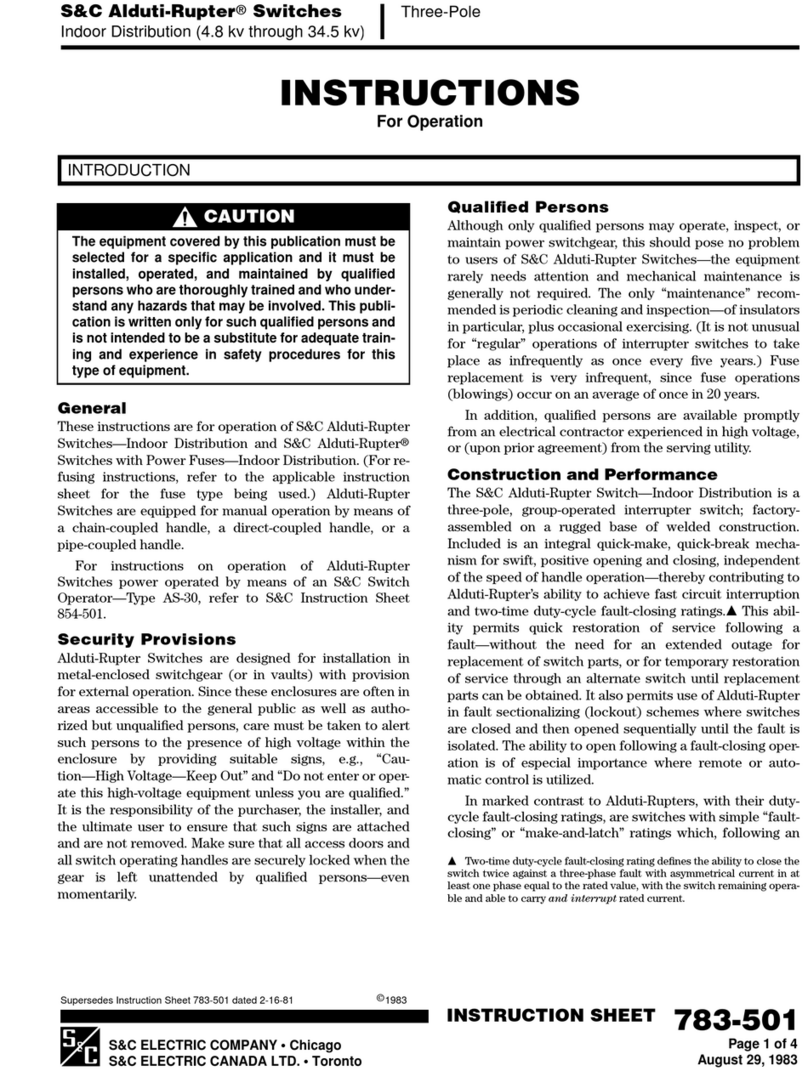
Qualified Persons WARNING
The equipment covered by this publication must be installed, operated, and maintained by
qualified persons who are knowledgeable in the installation, operation, and maintenance
of substation and overhead electric power transmission and distribution equipment
along with the associated hazards. A qualified person is someone who is trained and
competent in:
• The skills and techniques necessary to distinguish exposed live parts from nonlive
parts of electrical equipment
• The skills and techniques necessary to determine the proper approach distances
corresponding to the voltages to which the qualified person will be exposed
• The proper use of the special precautionary techniques, personal protective equipment,
insulating and shielding materials, and insulated tools for working on or near exposed
energized parts of electrical equipment
These instructions are intended ONLY for such qualified persons. They are not intended
to be a substitute for adequate training and experience in safety procedures for this type
of equipment.
Read this
Instruction Sheet NOTICE
Thoroughly and carefully read this instruction sheet and all materials included in the
product's S&C Instruction Handbook before installing or operating your S&C Series
2000 Circuit-Switcher, Model 2040. Familiarize yourself with Safety Information and
Safety Precautions on pages 4 through 7.
Retain this
Instruction Sheet
This instruction sheet is a permanent part of your S&C Series 2000 Circuit-Switcher,
Model2040. These instructions should be stored in the Series 2000 Switch Operator using
the instruction manual holder. The latest version is available online in PDF format at
sandc.com/en/support/product-literature.
Proper Application WARNING
The equipment in this publication must be selected for a specific application. The
application must be within the ratings furnished for the equipment. The ratings for this
Circuit-Switcher are listed on the nameplate on the front of the switch operator. Additional
application information can be found in Specification Bulletin 716-31.
Usual Operating
Conditions
Series 2000 Circuit-Switchers will perform as intended at temperatures within the range of
–40°C (-40°F) to +40°C (104°F) (–35°C (-31°F) to +40°C (104°F) for 161-kV and 230-kV models),
at altitudes of up to 5000 feet (1524m), and at wind loadings of up to 90 miles per hour
(145kmph). Further, Series 2000 Circuit-Switchers, when installed with the recommended S&C
anchor bolts and with exible-conductor connections at all six terminal pads, are capable of
withstanding seismic loading of 0.2g ground acceleration in any direction as well as performing
as intended during such loading and afterward. For applications at temperatures not within
the specied range, at higher altitudes, at higher wind loadings, or where higher seismic
withstand capabilities are required, refer to the nearest S&C Sales Ofce.
2S&C Instruction Sheet 716-502
Introduction
